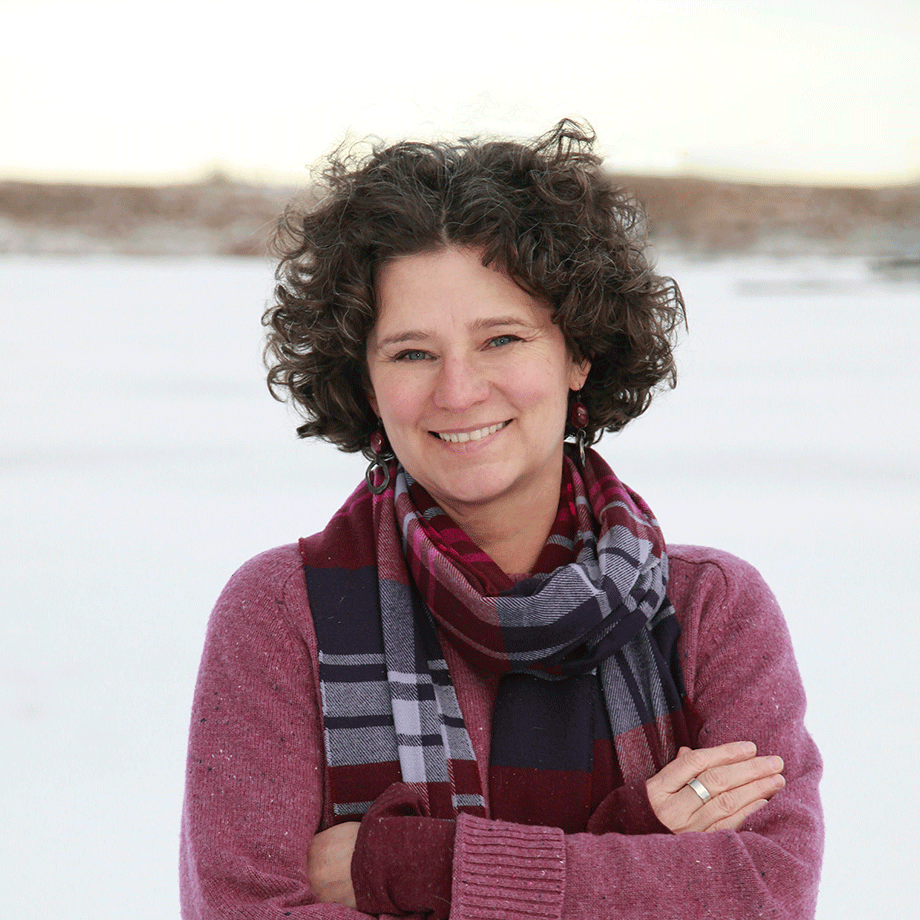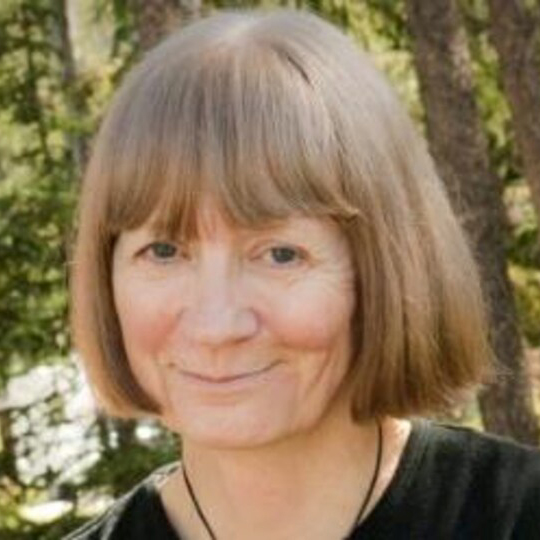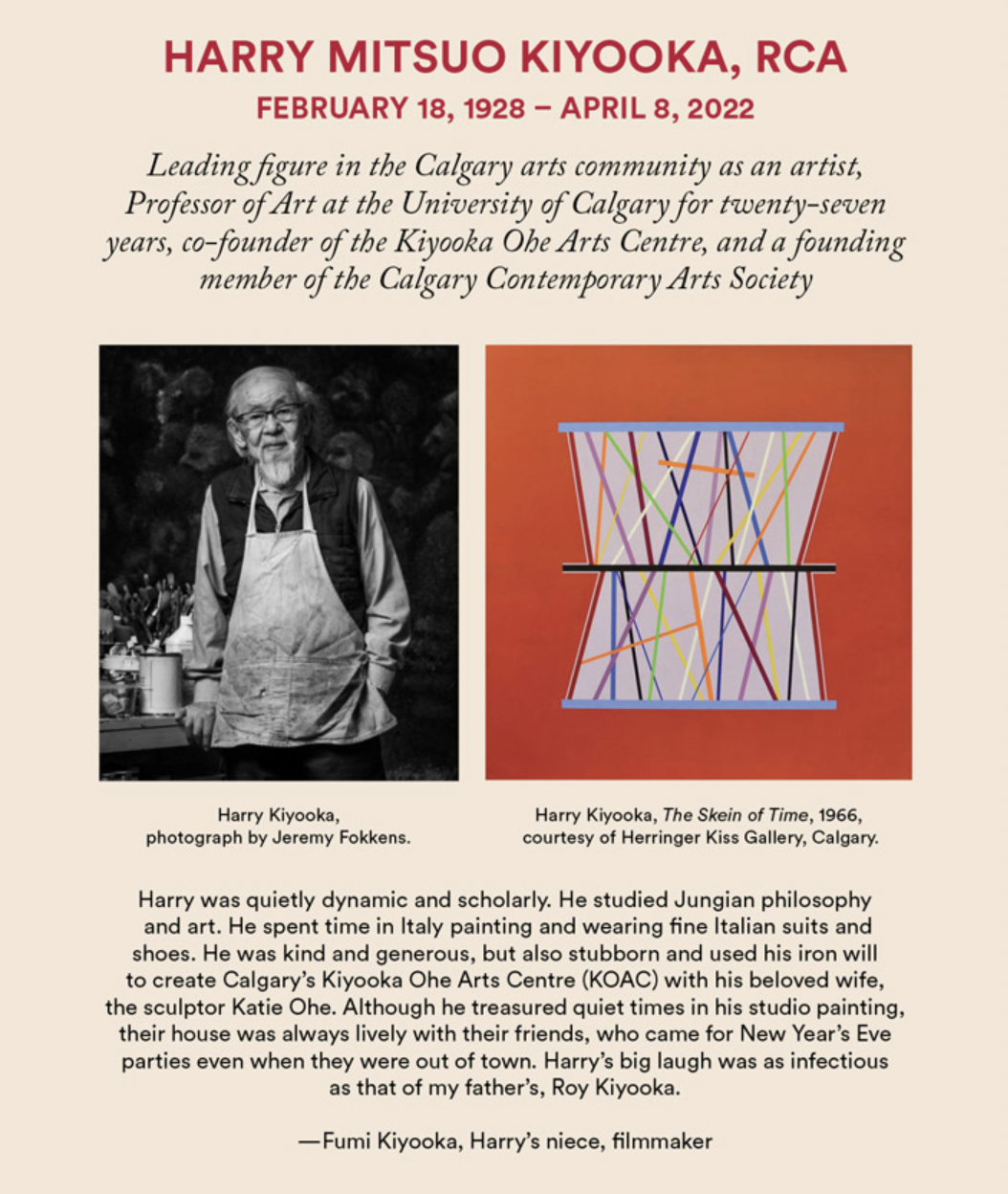Our Artists
Patricia Lortie’s “keepers” introduce a novel way of working with one of the most common industrial materials.
Cardboarding in lockdown
Her arborescent metaphors depicting giant human bodies in motion created a link between industry, nature and art.
Patricia Lortie’s winter residency at the Kiyooka Ohe Arts Centre started in the thick of a pandemic lockdown that lasted into the Spring of 2021. She spent weeks in isolation at KOAC “in the serenity of the sunny studio, with no internet, no visitors, and nowhere else to go because of all the COVID restrictions,” as she put it.
Patricia’s playful and intuitive exploration at the KOAC studio allowed her to engage with cardboard in compelling ways, a material she collected from alleys and recycling bins. She successfully used volume, mass, shape, and even colour as guiding principles. She reused mostly cardboard boxes past their particular contexts and uncovered alternative identities, moulding them into abstract forms beyond their original intent.
Walking for the first time into the studio as the Covid wave receded, one was greeted by an intriguing group of curved cylinder-shaped, 8-feet tall objects that seemed inert and full of movement. The cluster of sculptures felt like a revelation forming in real-time with the captivating and qualitative coexistence of the life and lifeless.
Katie Ohe gave Patricia constant and opportune feedback and saw first-hand the intricacies of the forms Patricia intended. She said: “Patricia’s work will influence the art community because the way she is using and building with cardboard is completely innovative and visionary. I have never seen cardboard used this way. It is important because cardboard is an essential part of the renovation cycle if we use it correctly.”
In modern art, the meaning of a sculpture can be mysterious. And the onlooker has the freedom to interpret it. Patricia’s three-dimensional cardboard trees with human-like curves create – separately or holistically – a representation of a reality in which Nature is within us – not extraneously out there and pay an unlikely tribute to the connection between industry, art and Nature.
As she explains in the videotaped interview with writer Gisèle Villeneuve, the outcome was a sublime sculptural community of “gentle tree-like creatures with personalities of their own that hold secrets we have yet to uncover about our world. As I moulded layer upon layer of cardboard, I got to know each one.” Patricia calls them “The Keepers” because they not only come from trees (cardboard) but also embody a critical message about climate change, excessive consumption, and environmental pollution. “Like our earthly forests, it feels like my sculptures are keepers of ancient knowledge and infinite potential for life. It feels like they know things we don’t.”
The arrival of COVID prevented us from having Patricia’s creative process interact with and feed off the public’s attention and questioning. Consequently, KOAC decided to pair a writer with Patricia to write a piece based on the occasion of Patricia’s work rather than about the artist’s work. Gisèle spent numerous hours interviewing and observing Patricia’s creative process. She wrote a rather personal essay that is as much about her as a writer as it is about the ideas explored in Patricia’s residency.
INTO THE WOODS: DECODING AN ANCIENT ALPHABET
Musement on Patricia Lortie’s installation
“The Keepers”
Gisèle Villeneuve
Musement is imagination at work,
the wandering mind immersed in the creative process.
Bertrand Gervais,
based on Charles Sanders Peirce’s principle
A sculptural installation of cardboard trees, well-spaced for pleasure walking, complete with a video projecting on the trunks outlines of human forms. Those abstract contours suggest the reflecting canopy under a gentle wind and in the play of light. A visual metaphor for self and community, says Patricia.
Both slender and curved, her sculptures fit in naturally with the theme of fluid movement undertaken in her paintings. Figures of humans intertwined in a perpetual vital thrust. Inclined or arched, each silhouette propels itself, so the next one can take its place. The rippling shapes evoke the ruffle of water.
For Patricia, water is as fundamental as nature itself in its entirety. Flushing out memories of childhood. Spring floods near the St. Lawrence River. Cottages built on piles. For hours, canoeing between flooded trees. Garnered ritual that creativity, one day far from the place of origin, brings forth.
Wave and spiral and billow. Sinuous softness permeates sculptures and drawings. Happy days of idleness floating on water allude to the quiet forest, an invitation to slowing down. The art installation, as a map of collective and personal memory; an interaction between the individual and her community. The artist, interpreter of signs.
In the forest, each tree is separate from its neighbours, and yet it is also linked to them through a complex network of nutrients. To understand the forest is an attempt to understand the human experience. For Patricia, trees are the keepers. What are they keeping us from? Perhaps, the illusion our species has of its true autonomy, she observes.
Switching from abstract idea to concrete representation. Searching for the best material and method to construct those arborescent metaphors. Finding the technique, then living with the matter itself. Devising the video to include the large canvas depicting the human bodies in motion. In the beginning, all is test, reflection, experiment, retreat. Restart.
And so, you enter the studio with a concept and welcome that moment of uncertainty. You hold on to it as long as possible, knowing it is an essential hiatus in the creative process. Similar to the dormant phase of the forest in winter. Waiting for sap rising in the spring. And now, unfolded and simplified, the idea can lead you to the work itself.
The writer too searches for the breach in an idea. How to insinuate herself into the rough text. Unscathed. Like water infiltrating into the soil sustains the entire community of trees. What the mind can insinuate, still doubtful where to go. Stay the course. Willing to risk failure. Try again. Propelled, always, by the imperative impulse to jump higher.
And with Patricia, I step into the studio, that splendid bric-à-brac of the imagination erecting reality. Even when swathed in metaphors. The studio is the jumble of the mind in a creative rush. For the writer at her desk, it’s to collect large and lavish, only to cull later. In pursuit of the how of all things. The anarchy of beginnings.
In the clutter of what’s-to-come-next, that sanctum where memory metamorphoses, the artist collects tools and materials. Material dictates form, she says. Like voice in writing carries the text. From the whims of creativity follows serenity in the act of doing. Tree likeness to evoke an emotion, that of belonging to the world.
Strategies and haptic intervention. The emergence of a method. Patricia values process over result or the finished product. Another way to emphasize the art of doing. And in the painstaking attention to detail, intensive repetition induces a contemplative state. Obsessive, a little out of breath, but oh so vital.
What creatures, alive, hibernating or stuffed, inhabit the deconstruct loft of the writer and her stories reimagining the world? Patricia constructs the overall arc of the installation. The artist in the craft of making. Everyday tasks. Measure, cut, glue sheet after sheet of corrugated cardboard, slowly laminating. A process not unlike the growth rings of trees.
Patricia and her trees. She makes nine of them. An odd number. Playing the odds in art favours harmony. Being an odd-ball in writing means breaking the rules. Shocking maybe, but not a faux pas. To dare. All the more so that the odd number can’t be integrally divisible by two. Even in a species of deciduous trees, each specimen is unique.
Cardboard, exclaims Patricia! But what if this material is unworthy, even stupid? And reject the noble ones, marble or granite, bronze or steel? And even disregard clay or porcelain ennobled by fire? Stroke of genius! Cardboard is made out of recycled paper; the sculptures are constructed with cardboard. Hence, double recycling of material.
Manna: that found object meant to be used only once, then discarded behind shops. The artist and the dumpster, to gather her raw material. Cardboard on its journey: from felled tree to pulp and paper; recycled as art object. Manna: the sweet exudation from the manna ash, which bark strangely resembles Patricia’s sculpted trunks.
To touch the cardboard, rough, yet soft, with gentle hand/Touch – for there is a spirit in the woods, wrote Wordsworth. Longing to understand the process. What lends the striking likeness of bark are the flutes or grooves of each layer of cardboard seen in longitudinal sections. Corrugated cardboard revealed. Full circle of a mutation.
On the construction table, as on the mortuary slab, but in reverse, lies the tree in the making. And contrary to trees fallen in a winter storm, Patricia will raise her tree to exhibit it with the other finished sculptures. So many hours of intimacy spent with each object suggest the slow growth of forests.
In the studio, antechamber to the art gallery, dominates the mess of creation. To sculpt a tree with cardboard, one layer at the time, it is also to write a book, page by page, chapter by chapter. Book ready to be put to bed, tree recumbent, and following a long labour, the writer and the artist launch their works, standing tall, into the world.
Version Française
AU CŒUR DU BOIS, INTERPRÉTER UN ALPHABET CAMOUFLÉ musement autour d’une installation de Patricia Lortie
Gisèle Villeneuve
Le musement est l’imagination au travail, l’errance d’un esprit en plein processus créateur.
Bertrand Gervais, selon un principe de Charles Sanders Peirce
J’hésite à l’orée du texte comme devant le fouillis des fardoches à traverser. Un essoufflement à pénétrer la forêt, cette claustrophobie d’arbres qui poussent serrés. Patricia aussi devant l’idée s’était arrêtée. Touffue, l’idée devient bushwhacking bloquant le passage vers la clarté d’exécution. D’où la nécessité de revenir à l’essence des choses.
Une installation sculpturale d’arbres de carton, sous-bois dégagé, espace épuré, accompagnée d’une vidéo projetant sur les troncs des esquisses de corps humains qui, dans leur abstraction, suggèrent la réflexion des feuilles de la canopée sous le vent et la lumière. Métaphore visuelle du soi et de la communauté, dit Patricia.
Ses sculptures, à la fois élancées et courbées, s’imbriquent naturellement dans la continuation de son œuvre de la mouvance en peinture. Figures humaines entrelacées dans un perpétuel élan vital. Chaque silhouette, inclinée, cambrée, se propulse pour céder sa place à la suivante, l’ondulation des formes rappelant la fluidité de l’eau.
Pour Patricia, l’eau est une valeur fondamentale autant que l’entièreté de la nature. Mémoire débusquée de l’enfance. Crue des eaux au printemps près du fleuve Saint Laurent. Chalet bâti sur pilotis. Des heures en canot à pagayer entre les arbres inondés. Rituel engrangé que l’acte créatif, un jour très loin du pays d’origine, fait ressurgir.
Flot et sinuosité, rondeur et douceur imprègnent sculptures et dessins. Heureux jours d’indolence sur l’eau font écho à la quiétude en forêt, qui invite à la lenteur. L’installation, itinéraire d’une histoire personnelle et collective, interaction entre l’individu et sa communauté. L’artiste qui lit et interprète les signes.
En forêt, chaque arbre est séparé de ses voisins, mais est aussi lié à eux par un complexe sous-sol nourricier. Comprendre la forêt, c’est tenter de comprendre l’expérience humaine. Pour Patricia, les arbres sont les gardiens. De quoi nous gardent-ils? Peut-être de l’illusion que notre espèce se fait de son autonomie réelle, observe-t-elle.
Au cœur du bois, interpréter un alphabet camouflé/G. Villeneuve 2
Passer de l’abstraction de l’idée à la représentation du concret. Chercher la matière et la manière pour construire ces arbres-métaphores. Trouver la technique, vivre avec le matériau. Concevoir la projection pour intégrer le grand canevas du mouvement des corps humains. Au début, tout n’est qu’essai, réflexion, tentative, retrait. Reprise.
Entrer dans son studio avec un concept, accueillir l’état d’incertitude et le maintenir le plus longtemps possible. Un hiatus essentiel dans le processus créateur. Semblable peut être à la période de dormante en forêt, l’hiver. Dans l’attente au printemps de la montée de la sève. Simplifier la marche de l’idée vers le début du travail.
Pour celle qui écrit, trouver une brèche dans le texte à se faire. S’y faufiler au risque de s’écorcher. L’eau aussi s’insinue dans le sol pour nourrir les racines, la communauté intégrale des arbres. Ce que l’esprit peut insinuer sans savoir où il veut aller. Insister. Courir le risque d’échouer. Bifurquer. Se reprendre. Reprendre son élan. Mieux sauter.
Et avec Patricia, j’entre dans l’atelier, ce merveilleux capharnaüm de l’imagination qui bâtit le réel. Même vêtu de sa métaphore. L’atelier, c’est le désordre de l’esprit en pleine poussée de création. Pour celle à sa table d’écriture, c’est ramasser tout ce qui pourrait servir pour élaguer ensuite. La recherche du comment faire. L’anarchie des débuts.
Dans son capharnaüm, lieu privilégié de la transformation de la mémoire, l’artiste accumule outils et matériaux. Le matériau dicte la forme, dit-elle. Comme la voix en écriture porte le texte. Du hasard de la créativité découle la tranquillité dans le geste de faire. Figuration d’arbres pour exprimer une émotion d’appartenance au monde.
Stratégies et intervention haptique. L’émergence d’une méthode. Patricia est attachée au processus, la démarche plus importante que le résultat. Ce qui se traduit par l’art de faire. Et dans la minutie du travail, l’intensité de la répétition déclenche un état contemplatif. Un souffle, peut-être obsessif; vital.
Quelles créatures, vivantes, hibernantes ou empaillées, habitent le grenier déconstruit de l’écrivaine et ses récits qui réinterprètent le monde? Patricia construit ses sculptures au rythme des heures. Gestes familiers. Mesurer, découper, coller feuille par feuille de carton cannelé, lent laminage qui rappelle les anneaux de croissance des arbres.
Patricia et ses arbres. Elle en construit neuf. Un nombre impair. L’impair en art, c’est l’harmonie. Commettre un impair en écriture, c’est briser les règles. Choquant peut-être, mais pas une maladresse. Oser. D’autant plus que l’impair est unique, n’a pas de double. Et même chez une espèce spécifique de feuillus, chaque arbre a son identité distincte.
En carton! lance Patricia. Et si c’était un matériau insignifiant? Abandon des nobles matériaux, marbre ou granit, bronze ou acier. Abandon même de la terre ou de la porcelaine ennoblies par le feu. Trait de génie! Le carton est manufacturé à partir de papier recyclé; les sculptures faites avec du carton. Double recyclage de la matière.
Au cœur du bois, interpréter un alphabet camouflé/G. Villeneuve 3
Manne : cet objet trouvé derrière les magasins. Cartons d’emballage n’ayant servi qu’une fois. L’artiste fait les poubelles pour récolter sa matière première. Voyage du carton vers son origine : arbre abattu, pâte et papier; recyclage en objet d’art. Manne : l’exsudation sucrée du frêne dont l’écorce rappelle curieusement les fûts sculptés de Patricia.
Toucher le carton, à la fois rugueux et doux, with gentle hand/Touch – for there is a spirit in the woods, a écrit Wordsworth. Désir de comprendre le procédé. Ce qui donne l’effet surprenant d’écorce, ce sont les cannelures de chaque épaisseur de carton en coupe longitudinale. Le carton ondulé mis à nu. Cercle complet d’une certaine métamorphose.
Sur la table de construction, comme sur une table de dissection, mais à l’inverse, gît l’arbre en devenir. Et à l’inverse des arbres tombés pendant une tempête d’hiver, Patricia lèvera son arbre pour l’exposer en compagnie des sculptures complétées. Tant d’heures en intimité avec chaque objet suggèrent la pousse lente des forêts.
Dans l’atelier, antichambre de la galerie d’art, règne le désordre du devenir. Sculpter un arbre avec du carton, épaisseur par épaisseur, c’est aussi écrire un livre, page par page, chapitre par chapitre. Livre couché, arbre gisant et, au bout du long labeur, l’écrivaine et l’artiste les lancent, debout, dans le monde.
Patricia Lortie is an Alberta-based artist originally from Quebec and was KOAC’s Artist in residence from November 2020 to July 2021, during which she worked on cardboard sculptures that were shown as part of all-francophone women group exhibition in the Summer of 2021.
Patricia’s practice takes root in her physical and emotional relationship with the natural world.
Her work is a visual expression of the feelings of freedom, communion and humility generated by her encounters with nature throughout her life and explores our place within the ecological system, as the essence of who we are.
Patricia has served on the boards of many Alberta arts organizations, is a well-known educator in the community and a valued volunteer and advisor for the KO Arts Centre where she has worked with Katie Ohe at the KO Arts Centre since 2012.
As a kid educated exclusively in French in her native Montréal, she was a master of the monthly school composition, challenging herself to avoid the easy verbs “to be” and “to have” in favour of verbs of action.
As a young adult honing her adopted tongue, English, while living in London, England, she delighted in experimenting with the infinite possibilities of a linguistic merger that would be novel and exciting.
Your generosity is more important than ever
The Kiyooka Ohe Arts Centre is a place for art and artists, for the curious, for the novice and for the expert alike – everyone is welcome to visit, to make, to learn and to talk about contemporary art, whether by traversing our sculpture grounds and gardens, or visiting (when appropriate) with our artists in studio or via our digital forums and workshops.
Regular support from our friends enable us to sustain our work with artists, audiences and communities. Help us keep our grounds open as an escape into Art-in-Nature during this unprecedented time.
Become a member. You can make a difference today. All memberships and donations receive a CRA donation tax receipt.
The KO Arts Centre Society of Calgary is a registered charity. CRA Business Account # 83391 4955 RR001.




